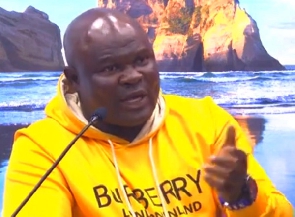Born on April 24, 1827, Ghana’s Kwasi Boakye is the world’s first black mining engineer. The African-Dutch mining engineer was a prince of the Ashanti Empire and the eldest son of Kwaku Dua II, a king of the Ashanti kingdom.
In 1837, along with his cousin Kwame Poku, the prince left to pursue an education in the Netherlands. The prince and his cousin were sent from their homeland to the Netherlands as part of a deal that gave the Dutch ”recruits” from Africa when they could no longer legally take slaves.
The king received a portion of the agreed sum and offered his eldest son Boakye and his cousin Kwame Poku, both aged 10, to Holland. They were given to the governor in Gijzel.
The two boys arrived at the Netherlands at a French boarding school.
They were both raised with the Christian doctrine and in 1843, they were baptized in the Dutch Reformed Church of Delft.
Although history has it that the boys were treated well, ‘The Two Hearts of Kwasi Boachi’, a novel that tells the story of Kwame Poku and Kwasi Boakye, portrays otherwise.
According to Dutch author Arthur Japin, the young princes were beaten up on the street and bullied at school; they were flustered by the Dutch Christmas custom of blackface.
They inevitably grew apart. Kwasi trained as a mining engineer at Delft University, where he graduated in 1847. His cousin Kwame Poku returned to the Gold Coast (now Ghana) while prince Kwasi stayed in the Netherlands.
He successfully completed his civil engineering examinations in 1847, and was subsequently assigned to a mining engineer. In contrast to the other students, from July 1847 to July 1848, he became a student at the mining academy in Freiberg in Saxony, where, among other things, he was taught by the then famous Bernhard von Cotta.

While others were made available to the governor-general of the Dutch East Indies on February 19, 1850, as second class engineers and as aspiring engineers, Kwasi waited until April 22, 1850, to learn that he would become an ‘extraordinary’ aspiring engineer.
He was reportedly discriminated by his superior Cornelius de Groot van Embden. He was described as highly intelligent and very good at what he did yet due to his colour, he was barely recognized.
He resigned and requested a public service. He also requested the Minister of Colonies Pieter Mijer to be compensated for the non-fulfilment of promises made to him.
In 1857, Kwasi became entitled to a monthly allowance of 500 guilders and 710 hectares of wasteland in the residence Madiun in leasehold that was liquidated in 1898.
Kwasi later settled in Bantar Peteh, a little south of Buitenzorg. He reportedly bore several children outside of marriage to native women.
He was a member of the Association of Civil Engineers (later called the Association of Delft Engineers). In 1871, he again became a member and correspondent for the Dutch East Indies.
In 1893, he was appointed an honorary member. He died in 1904.
General News of Wednesday, 18 December 2019
Source: face2faceafrica.com

















